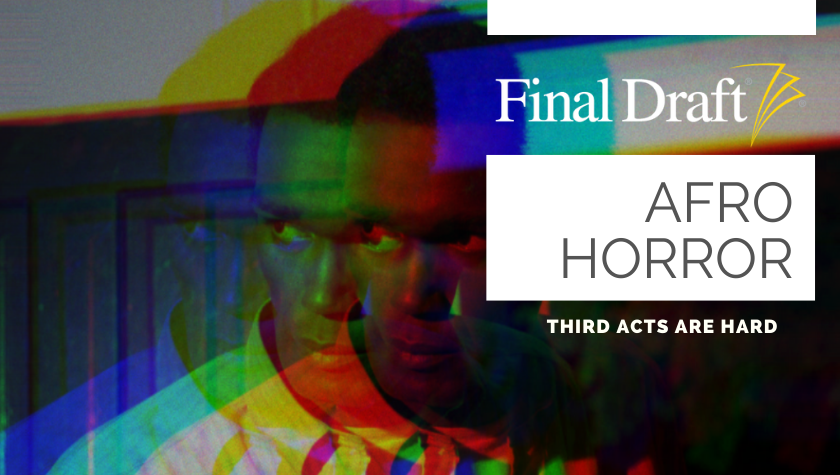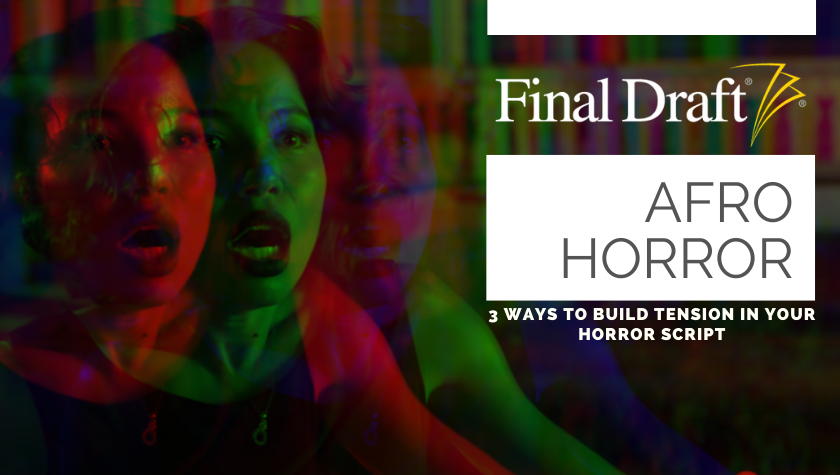Afro Horror: Turning Fear into Stories
February 5, 2021
Google dictionary defines fear as "an unpleasant emotion caused by the belief that someone or something is dangerous, likely to cause pain, or a threat." For me, my greatest fear is heights. Except…I love rollercoasters. How? Because it’s not actually being up high that scares me, it’s falling. Except…I want to go sky diving one day. How? Because…it’s not the falling that scares me…it’s dying.
What I'm saying is, everyone has fears (some of us more than others), and usually our external fear isn’t actually the thing we’re scared of, but a result of something internal. For me, falling from high spaces equals death. Scary. Which is why most of my work centers around analyzing human morality and grief. My mother once told me as a child to “face my fears” to make them go away — and now I am going to say the same to you.
So, how do you take your fears and turn them into stories? Here are my tips:
- HONE IN ON YOUR FEAR. Think about what you’re afraid of. Is it spiders? Clowns? Women? Once you have that scary boogyman in your mind, dissect it, take it apart, and pull out the center of it — that’s your real fear. Now think about why you’re afraid. Most of our fears are triggered by childhood trauma. An older sibling dangling a spider over your head. The first time you saw Pennywise or perhaps an abusive parent. Writing is rooted in exposing your soul, so once you sit down and tackle your insides, you’ll be able to take it to the page without reservation.
- FLIP IT. Nobody wants to see a movie that’s too on the nose. It’s lazy, boring and ultimately bad writing. Some call it “spoon feeding the audience” — I call it preachy nonsense. Audiences want to disappear into your story and you, the writer, are telling the story for a specific reason. How do we achieve both? You flip it. Take your surface fear and turn it into a physical metaphor, something tangible the audience can hold on to without knowing it’s your actual fear. For example, in the film The Babadook, the lead character’s depression is filtered through a mystical monster who haunts her child. We go on a journey with her to defeat the Big Bad which just happens to also be her internal struggle. It’s smart, captivating...and scary.
- MAKE IT MEAN SOMETHING. There’s nothing worse than setting up a great horror and then leaving the theatre feeling empty. Our fears are the greatest litmus test of who we are as human beings, which is why the horror genre is my personal favorite to write in. Take your deducted fear, strain it through your story, and make it mean something personal to you in the end. What are you trying to say to the audience? Why are you choosing this conduit for your fear in particular to scare them? Is it because you’re a glass half-full person or you believe good deeds lead to the path of eternal grace, evidence of which is the movie's hero overcoming their fear because you're an optimist? Your personal reason must tell the audience what kind of person you are (optimist, realist, religious) — then whatever that reason is, embed it into the fabric of your character’s fears so that they can come out the other end different than how we met them.
These tips can not only help you write a stronger horror film, but can also be used to defeat your own personal fear in real life. See it, turn it around, and give it meaning so that you can work with (or conquer) it. The power in overcoming fear is to acknowledge it while never letting it consume you.
Written by: Sade' Sellers
Sade Sellers is a screenwriter and producer based in Burbank, California. Originally from Michigan’s capital, Lansing, Sade’ has been working in the entertainment industry since 2009. In 2017, Sade’ was a finalist for Tv One’s Screenwriting competition for her teleplay The Replacement. This achievement motivated the network to hire her as a writer for their upcoming movie of the week event, Deadly Dispatch, which premiered on the platform in the summer of 2019. Through that production process, Sade’ met casting director Leah Daniels-Butler who was in the midst of staffing her production company, 1oneninety5. Sade’ then rose to the role of Vice President of Content Acquisitions and Development and spent the next year learning the ecosystem of film and television development from pitching to production. Using that experience, and bound at home due to COVID-19, Sade’ made a return to her first love, screenwriting, utilizing her free time to write new content. www.sadesellers.com- Topics:
- Discussing TV & Film




